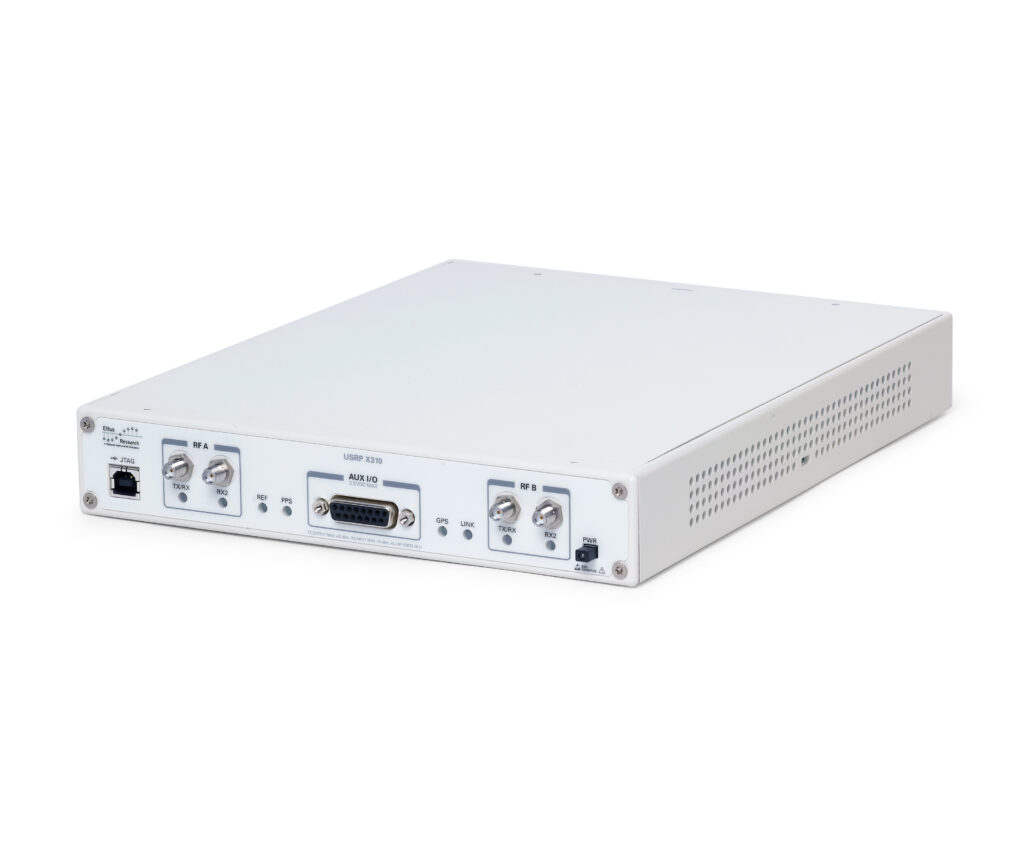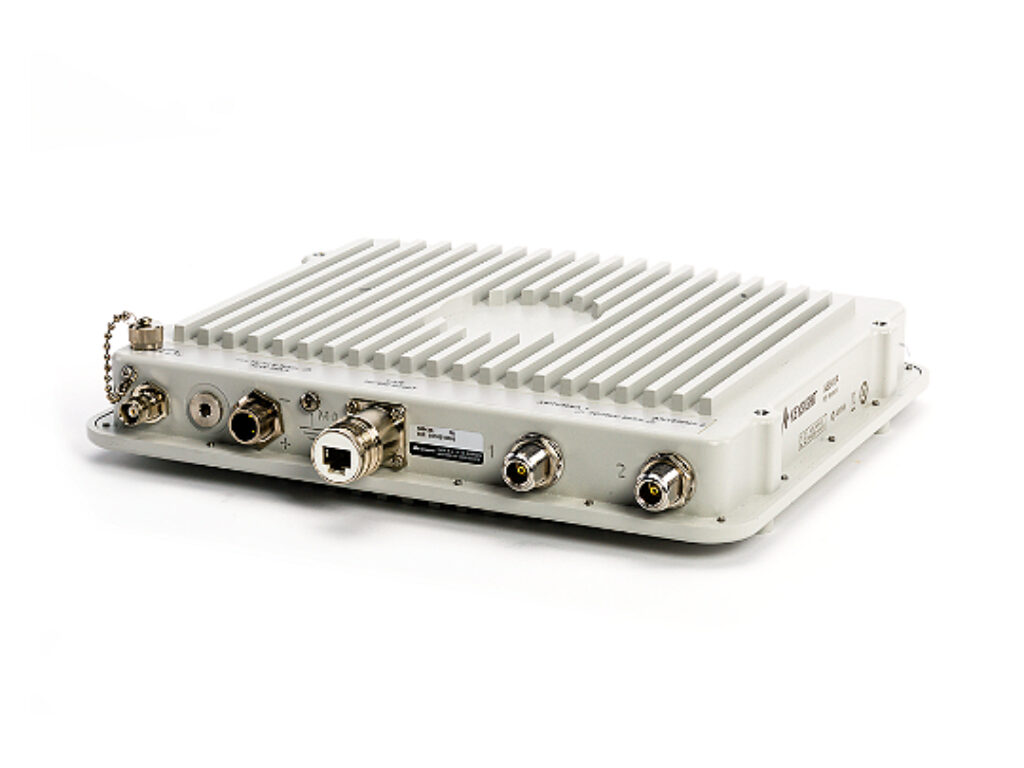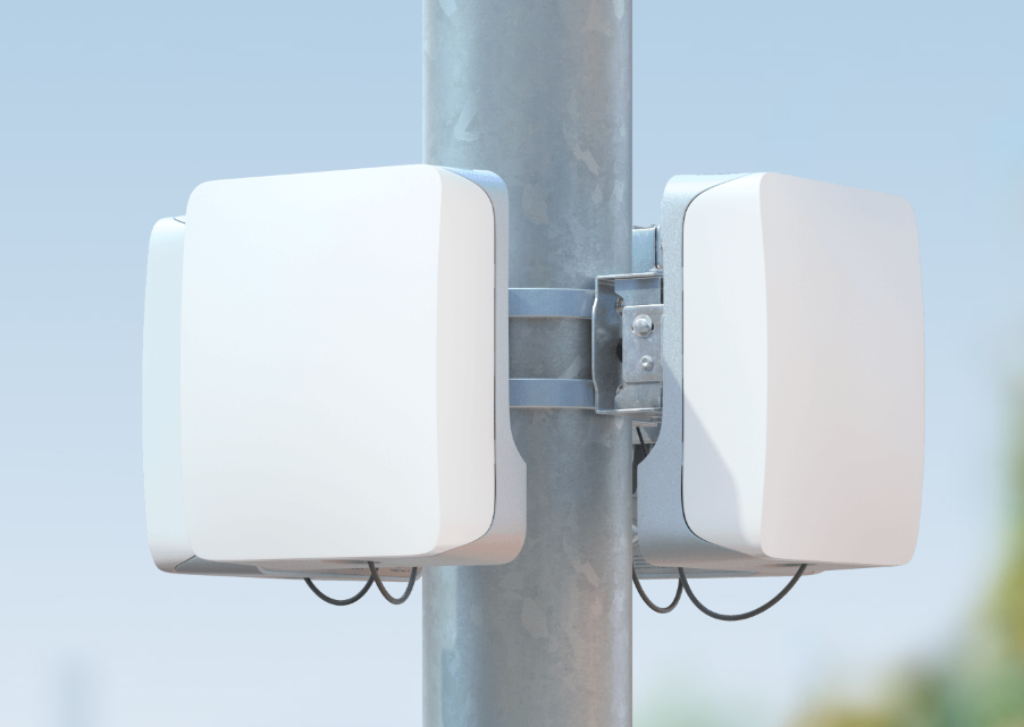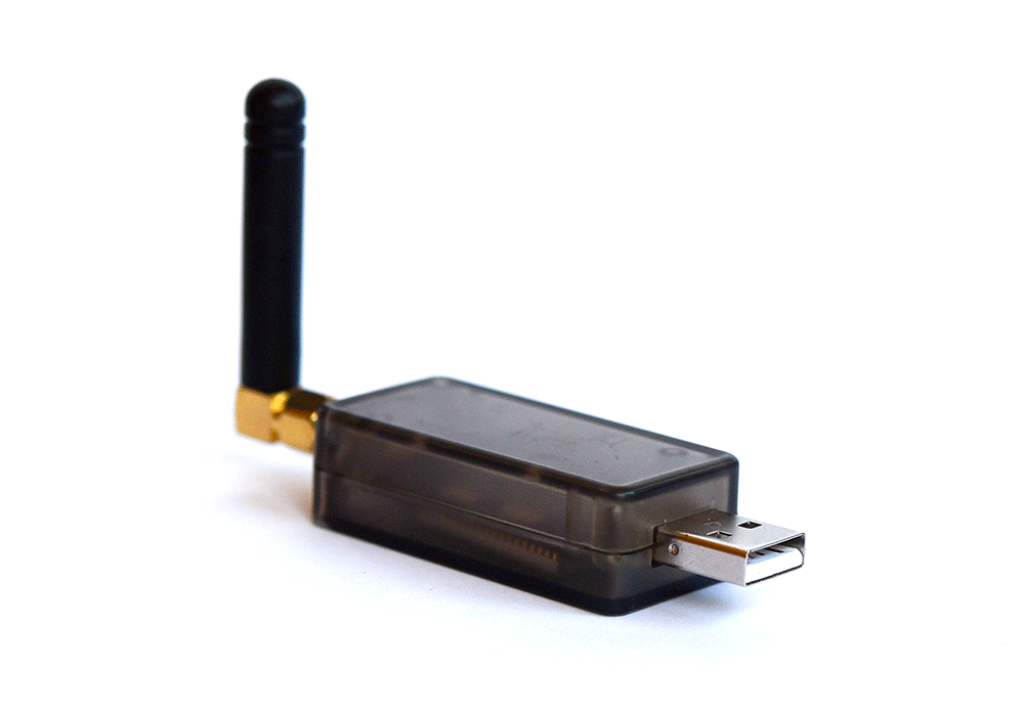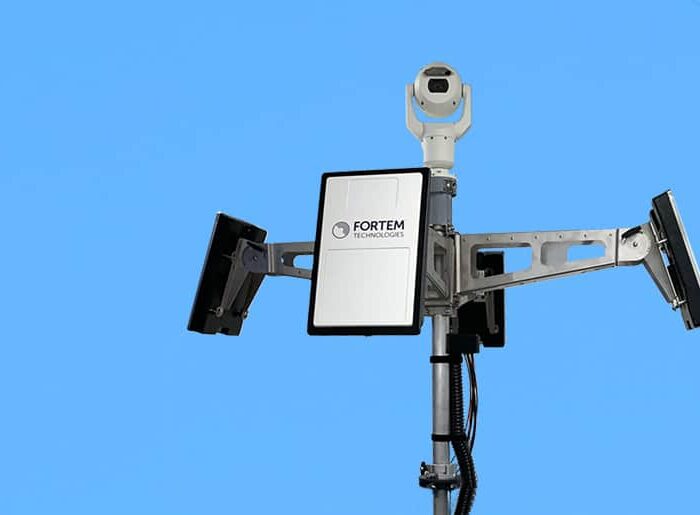AERPAW will support various different types of USRP platforms from NI. For AERPAW fixed nodes, we are deploying USRP N310s and USRP X310s for experimentation, and USRP B210s for spectrum compliance monitoring. USRP N310 supports the frequency range 10 MHz to 6 GHz, with an instantaneous bandwidth up to 100 MHz per channel, as well as 4 RX and 4TX channels, 16 bit ADC, 14 bit DAC, and a Xilinx Zynq-7100 SoC. USRP X310 supports the frequency range 10 MHz to 6 GHz, up to 160 MHz bandwidth, 2 RX and 2TX channels, 14 bit ADC, 16 bit DAC, and a Xilinx Zynq-7100 SoC. USRP B210 supports frequency range between 70 MHz to 6 GHz, up to 56 MHz of instantaneous bandwidth, and 30.72 MHz of instantaneous bandwidth in 2×2 MIMO (61.44 MHz sampling rate). It has 2 RX/TX for MIMO, 12 bit ADC, 12 bit DAC, and a Xilinx Spartan6 SoC. Our portable nodes will use USRP B205mini, the smallest USRPs, which feature a Xilinx Spartan 6 XC6SLX150 FPGA and Analog Devices AD9361 RFIC direct-conversion transceiver. USRP B205mini supports frequencies between 70 MHz – 6 GHz with up to 56 MHz of instantaneous bandwidth (61.44 MS/s quadrature), and full-duplex operation. We will also support USRP B210 for portable node experiments.
Many of the AERPAW fixed nodes will include Keysight N6841A RF Sensors. These sensors have a wideband RF receiver with 20 MHz to 6 GHz frequency range and a maximum real-time bandwidth of 20 MHz. They are embedded within an environmentally rugged IP67-rated weatherproof enclosure, and they have an integrated GPS for sensor location and time-synchronous applications. Their signal LOOKback memory of 4.8 secs at 20 MHz BW makes it possible for reliably detection, processing, and location of short-duration signals or interference. Some use cases for N6841A RF sensors include automated spectrum monitoring, signal intercept, collection and classification using N6820ES Signal Surveyor 4D software, signal capture and analysis using 89601B Vector Signal Analyzer software, and emitter location and RF geo-analytics using N6854A Geolocation Server software.
AERPAW is deploying Facebook Terragraph radios to several of its light-pole and roof-top fixed node locations in the Centennial Campus site. The Terragraph radios from Facebook operate in the 60 GHz unlicensed spectrum. They can support up to 3.6 Gbps peak bi-directional aggregate data rate at link distances up to 150 meters (higher communication range is possible at lower data rates). Initial Terragraph deployments in AERPAW will support applications such as channel sounding, wireless backhaul, and mesh networking.
LoStik by Ronoth is an easy to use, LoRa/LoRaWAN™ compatible device. It lets IoT (Internet of Things) integrators, network testers, and hobbyists get connected to LoRa® networks faster, diagnose network issues more easily, and build new and exciting connected devices.
Ronoth USB Dongle for LoRa® wireless networks uses a RN2903 (US). LoStik uses a simple ASCII interface. You can configure it and send commands over serial / COM port. In addition to Ronoth USB dongles, AERPAW will also deploy multiple LoRa gateways in each of its sites; more information will be provided in the future.
AERPAW Lake Wheeler Road Field Laboratory (LWRFL) site will support a TrueView R20 Radar (non-ITAR) from Fortem Technologies. The TrueView R20 radar is an electronically scanned phased array radar that operates at the 15 GHz band. It uses artificial intelligence techniques at the edge for superior detection, tracking and classification of unmanned aerial vehicles. Initially, the R20 radar will be used in AERPAW to manage multiple drone operations. Possibility of opening TrueView R20 radar for experimentation by external users will be evaluted in the future.
Other Wireless Equipment
AERPAW will host several other types of wireless equipment that will be available for experiments. They will be posted to this page as the details are finalized — stay tuned! Bring your own device (BYOD) type experiments will also be supported as long as they satisfy certain criteria.


